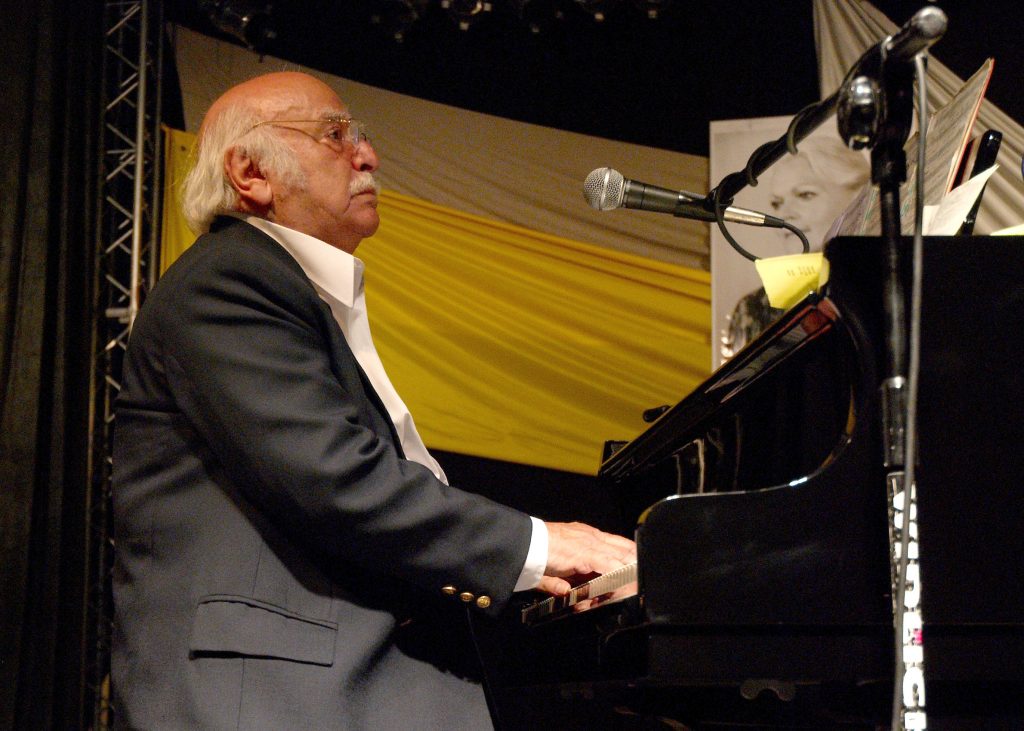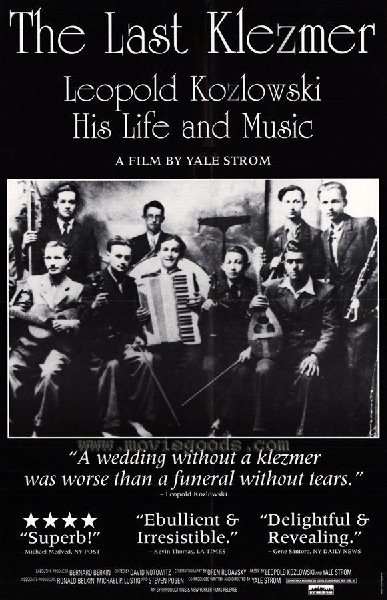Nash Holos: Leopold Kozlowski, The Last Klezmer

One of Galicia’s few klezmer musicians to survive the Holocaust was Leopold Kozlowski. Known as the last klezmer of Galicia, he is a passionate promoter of klezmer. He lives in Krakow, Poland where he teaches klezmer to non-Jewish students.
Klezmer is a traditional Jewish non-liturgical music with roots in Galicia. Like other folk traditions, klezmer music was passed down from generation to generation.
Initially klezmer was performed at weddings because structurally it corresponds to traditional Jewish marital rites.
The actual term «klezmer music» was coined by a Soviet musicologist in the late 1930s. It gained popularity in the West in the 1980s.
Kozlowski comes from a long line of klezmerim. His grandfather, Pesach Brandwein, together with his 12 musical sons, founded the most famous klezmer band in Galicia. One of Kozlowski’s uncles is clarinetist Naftule Brandwein, regarded in America as the “king of klezmer.”
 Kozlowski was born in 1918 in the Polish town of Przemyslany, near Lviv. Because of the shifting borders of the war years, the town is now located in Ukraine.
Kozlowski was born in 1918 in the Polish town of Przemyslany, near Lviv. Because of the shifting borders of the war years, the town is now located in Ukraine.
Before the Second World War, half of Przemyslany’s 7,000 inhabitants were Jews. In September 1939, Poland was divided between Germany and the Soviet Union, and the town became part of Soviet Ukraine. By 1941 the town’s population had nearly doubled, as Jews fled there to escape the Nazis.
In July of 1941, the German army arrived in Przemyslany. Within four months several labour camps stood nearby, and the murder of the town’s Jews had begun. In May 1943, less than two years later, Przemyslany was declared Judenrein or “cleansed of Jews.”
When the Nazis arrived, Kozlowski fled east, along with his father and brother. His mother stayed behind.
The men got as far as Kyiv. The German SS discovered them hiding in a cemetery on the outskirts of the city. They were freed after Kozlowski’s father, Zvi, asked the SS if they could play something before being shot. As they played, Kozlowski recalls watching the Nazis’ rifles lower bit by bit with the music.
The Kozlowskis returned to Peremyshliany, where Zvi was shot along with 360 other Jews. Leopold’s mother and brother were murdered soon after.
Kozlowski spent several months in Nazi labour camps. In one he taught a Nazi officer the accordion in exchange for food. In another, the Nazis forced him to compose a “death tango” and to play it while other Jews were led to their deaths.
After the war, Kozlowski studied music, and graduated from the Lviv Conservatory and Krakow’s Musical Academy.
He settled in Krakow, where he became a leading musical figure in Poland. He conducted a military orchestra and established a world-renowned Roma and Jewish music ensemble. He also directed the Jewish Theater in Warsaw, composed music for stage and screen, and edited the Polish version of “Fiddler on the Roof”.
Kozlowski is well known and revered in the North American entertainment industry. He performed with Itzhak Perlman in the film “In the Fiddler’s House” and even appeared in Schindler’s List in the role of an investor.
He continues to perform, and intends to keep playing until his last moment. Music, he says, is his life, and his revenge.
In 1994 American klezmer musician and film-maker Yale Strom released a film documenting Kozlowski’s first trip back to Prezmyslany since 1945. The title of the film is The Last Klezmer: Leopold Kozlowski, His Life and Music.
Listen to the program here.
Ukrainian Jewish Heritage is brought to you by the Ukrainian Jewish Encounter (UJE), a privately funded multinational organization whose goal is to promote mutual understanding between Ukrainians and Jews. Transcripts and audio files of this and earlier broadcasts of Ukrainian Jewish Heritage are available at the UJE website and the Nash Holos website.



















